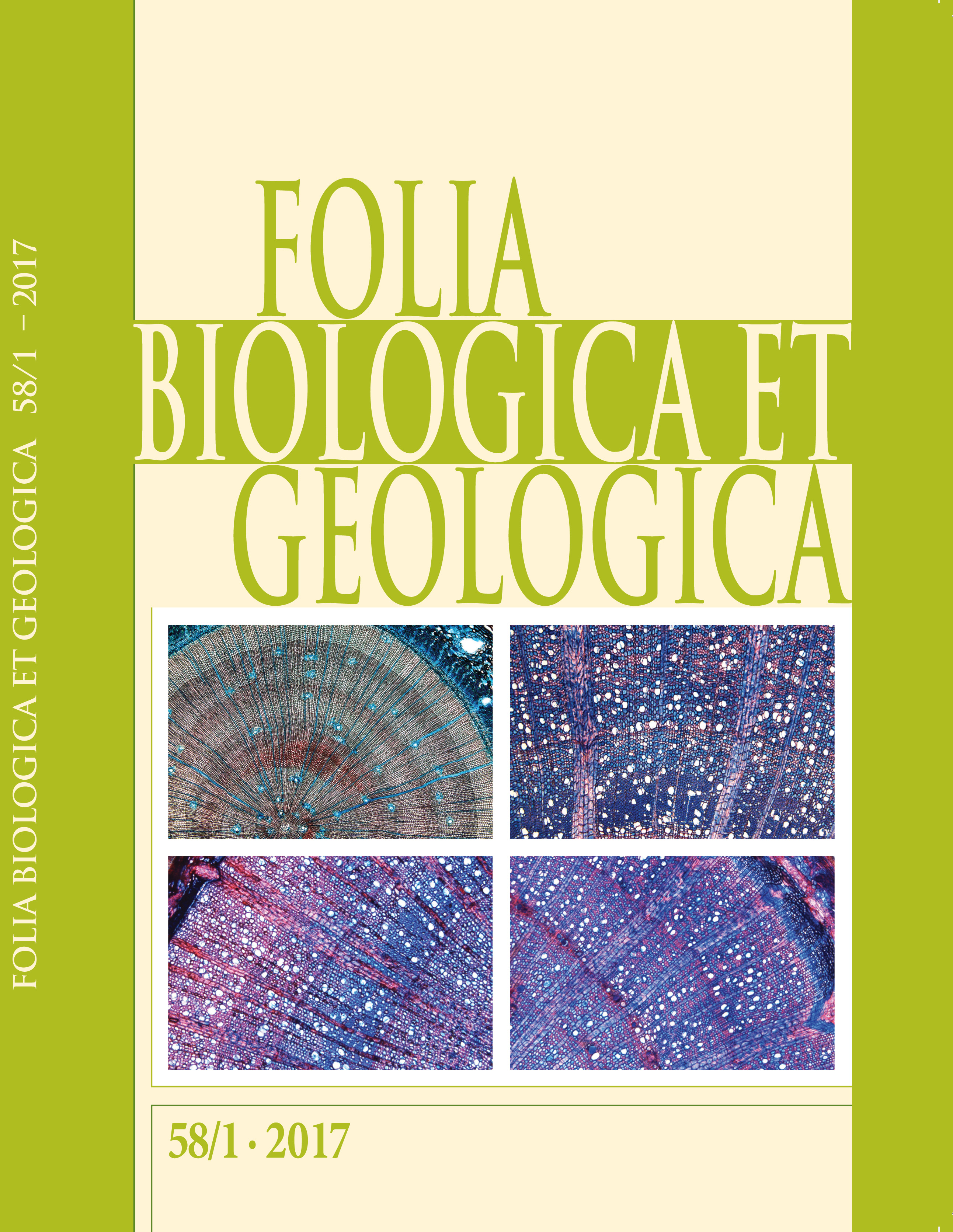Značilnosti zgradbe lesa sadik bora (Pinus sylvestris) in bukve (Fagus sylvatica) izpostavljenih trem različnim okoljskim razmeram / Characteristics of wood structure of pine (Pinus sylvestris) and beech (Fagus sylvatica) seedlings exposed to ...
DOI:
https://doi.org/10.3986/fbg0020Abstract
Poznavanje strukture in lastnosti lesa je ključno z vidika njegove smotrnejše obdelave, predelave in končne rabe. V članku opisujemo in primerjamo značilnosti zgradbe lesa triletnih sadik bora (Pinus sylvestris) in bukve (Fagus sylvatica) izpostavljene trem različnim temperaturnim režimom v rastnih sezonah 2010–2011: kontrola (K, na prostem, povprečna temperatura v času rastne sezone = 17–19°C), rastlinjak (G, povprečna temperatura v času rastne sezone = 22–24°C) in hladilna komora (C, povprečna temperatura v času rastne sezone = 15–17°C). Na preparatih prečnih prerezov lesa smo tako preverili prisotnost in delež reakcijskega lesa, prisotnost gostotnih fluktuacij, prisotnost kalusa ter za bor še gostoto in položaj aksialnih smolnih kanalov. Rezultati kažejo na vrstno specifičen odziv pionirskega rdečega bora in sencovzdržne bukve na različne okoljske razmere v smislu debelinske rasti in strukturnih posebnosti lesa. Pojavnost lesno-anatomskih značilnosti je bila v splošnem večja v letu 2010 kot v 2011. To bi lahko pojasnili s presaditvenim šokom in z večjo verjetnostjo povzročitve mehanskih poškodb ob manipulaciji sadik, ki so negativno vplivali na kakovost lesa. Razlike v strukturnih posebnosti lesnih prirastkov v obeh proučevanih letih tudi kažejo na nujnost večletnih tovrstnih poskusov v nadzorovanih razmerah, saj se nekateri odzivi lahko pokažejo šele v daljšem časovnem obdobju. Širina lesnega prirastka in lesno-anatomske značilnosti niso nujno povezane, zato na podlagi priraščanja ne moremo sklepati o kakovosti lesa.
Ključne besede: rdeči bor, navadna bukev, reakcijski les, smolni kanal, gostotne fluktuacije, juvenilni les, anatomija, kakovost lesa
Knowledge on structure and properties of wood is crucial for its optimal woodworking, processing and end-use. In the paper, we describe and compare characteristics of wood structure of three-year-old pine (Pinus sylvestris) and beech (Fagus sylvatica) seedlings exposed to different temperature regimes in the growing seasons of 2010-2011: control (K, outdoors, mean temperature during the growing season = 17–19°C), greenhouse (G, mean temperature during the growing season = 22–24°C) and climatized room (C, mean temperature during the growing season = 15–17°C). On transverse-sections of xylem, presence and proportion of the reaction wood, presence of the density fluctuations, presence of callus tissue, and in the case of pine also density and position of the axial resin canals were evaluated. The results show species-specific response of pioneer Scots pine and late-successional beech to different environmental conditions in terms of radial growth and structural characteristics of wood. Incidence of wood-anatomical characteristics were generally higher in 2010 than in 2011. This may be explained by the transplant shock, and higher probability of mechanical wounding of cambium, which have a negative impact on the wood quality, when setting up the experiment. The differences in the structure of xylem increments of 2010 and 2011 demonstrate that a continuation of such observations over several growing seasons is necessary to capture the short- and long-term response of tree growth under changing environmental conditions. Finally, width of the wood increment and wood-anatomical characteristics are not necessarily linked, thus increment width cannot be an indicator of wood quality.
Key words: Scots pine, common beech, reaction wood, resin canal, density fluctuations, juvenile wood, anatomy, wood quality




